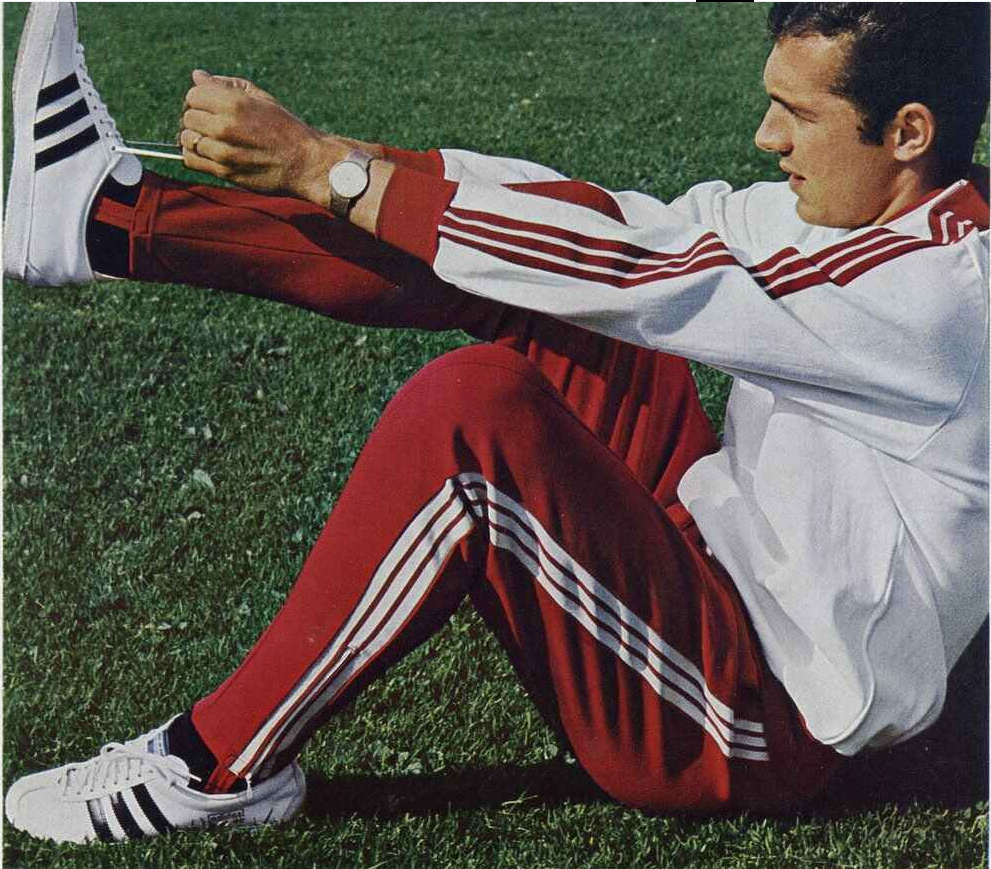If you went to any thrift store in the country in the year 2000, and you would have found branded merch galore. In the 1980s, companies realized the benefit of getting customers to promote their products prominently, so they started distributing branded merchandise in huge numbers.
But back in the 1960’s it would have seemed crude or crass to be a walking billboard unless you were a professional athlete or NASCAR driver. In 1967 Adidas didn’t even have their famous logo on their shoes and new tracksuit, and their name certainly wasn’t prominently displayed. At the time, they were simply promoting the “3-stripes” design. Adidas introduced its Trefoil logo at the 1972 Olympics. But it wasn’t until much later that flashing the brand name on your clothes became fashionable.
The 1980s
From 1952 to 1993, Izod of London was paired with the Lacoste shirt company. But it wasn’t until the late 1970s that the Izod Lacoste brand reached the height of its popularity in the US. In the 1980s, the Izod Alligator became the signature “preppy” wardrobe item mentioned in The Official Preppy Handbook. In the 1980s, Nike also began flashing their swoop, and the branding craze was on.
The 2000s
By the late ’00s, with the global “great recession”, marketing executives began thinking that wearable brand merch was a waste of money as the ‘market’ was too saturated, and brands were getting eroded when seen in thrift stores. Modern marketers, however, disagree. Wearable brand merch is on-trend, and it is likely to stay that way for some time.
A Thrifty Culture
More and more people are using thrift stores, and they are becoming so fashionable that prices are being driven up, especially as the population becomes more environmentally and socially conscious. The result is that it’s no longer a cardinal sin to have branded products appear in thrift stores. It stresses the importance of having a good name and logo, though – if you are producing any wearable merch, make sure either your name or your logo is either cool or quirky – both work well when clothes are rare.
It’s Easier than Ever to Produce Cool Products
It is cheaper than ever to get wearable merch printed, but it’s easier than ever to design unique products. There is an abundance of software that can help even the novice develop some creative ideas for wearables. It is also extremely easy to hire a graphic designer you can afford, thanks to sites like Fiverr that connect you with freelancers all over the planet. This has resulted in brand “knock-offs” appearing throughout the marketplace.
Consumers have Evolved Beyond T-Shirts
T-Shirts are the bread and butter of wearable brand merch, but merch companies offer much more variety to their customers. Custom hats, bracelets, shorts, mugs, flash drives, and even socks are popular. Each has its place in a marketing strategy. For example, merch like socks is good if you want the wearer to think of you, whereas custom hats are a good idea if your plan is to get many people to see your brand.
The Fashion Industry Has Changed
Since the 1970s, the fashion industry has thrown brands into the very mainstream. It is common for fashion companies to do very limited releases of their products. Consumers are no longer averse to wearing branded merch and actually prefer name brands.
You might also like:

